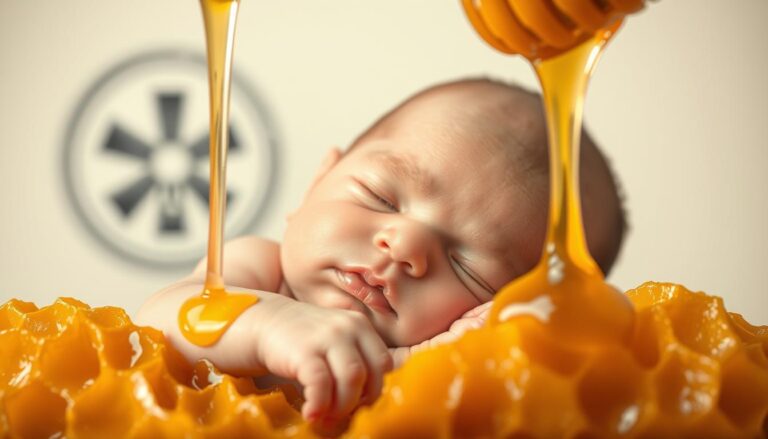Teething is a significant milestone in a baby’s life, marking the beginning of their journey into the world of solid foods and more complex oral functions. Typically, baby teething starts around six months of age, but it can begin as early as three months or as late as 12 months. when do babies start teething Understanding the teething timeline and recognizing teething symptoms can help parents prepare and soothe their baby’s discomfort. The teething process can be challenging, but knowing what to expect can make a big difference. Key Takeaways When Do Babies Start Teething: The Complete Timeline The journey of teething is a significant milestone in a baby’s development. As babies grow, the anticipation of their first tooth is a momentous occasion for parents. Understanding the teething timeline can help parents prepare for this journey. Average Age for First Tooth Eruption Most babies get their first tooth between 4 to 7 months of age. However, some might get their first tooth as early as 3 months or as late as 12 months. The average age for a baby’s first tooth to erupt is around 6 months. This is just an average, and the actual age can vary due to several factors. Normal Variations in Teething Timeline The teething timeline can vary significantly among babies. Factors such as genetics play a crucial role in determining when a baby will start teething. It’s essential for parents to understand that these variations are normal and that the teething timeline can differ significantly from one baby to another. Factors That Affect Teething Timing Several factors can influence the timing of teething, including genetics, nutrition, and overall health. For instance, babies who are breastfed might have a different teething timeline compared to those who are formula-fed, although this is not a hard and fast rule. Teething Stage Average Age Teeth Erupted First Tooth 6 months Lower front teeth Upper Teeth 8-12 months Upper front teeth Lower Molars 12-16 months Lower molars Upper Molars 16-20 months Upper molars By understanding the teething timeline and the factors that influence it, parents can better prepare for this significant phase in their baby’s development. Recognizing the Signs and Symptoms of Teething Understanding the signs and symptoms of teething can help parents navigate this challenging period. Teething is a natural process, but it can cause discomfort and distress for babies. Common Physical Signs One of the most common physical signs of teething is drooling. Babies often drool more than usual as their teeth begin to erupt. This excessive drooling can sometimes lead to a rash on the baby’s chin or cheeks. Another physical sign is swollen gums, which can be tender to the touch. Other physical signs include gnawing or chewing on objects, as babies try to relieve the pressure on their gums. Some babies may also experience a slight increase in temperature, but this is usually not a high fever. Behavioral Changes During Teething Teething can also cause several behavioral changes in babies. One of the most common is irritability. Babies may become fussier than usual due to the discomfort they are experiencing. Some babies may also exhibit a loss of appetite, as the pain in their gums makes feeding uncomfortable. Other behavioral changes include restlessness and waking up more frequently at night. The discomfort caused by teething can disrupt a baby’s usual sleep patterns. Distinguishing Teething from Illness It’s crucial for parents to distinguish between teething symptoms and signs of illness. While teething can cause some discomfort and mild symptoms, it should not lead to severe illness. If a baby has a high fever, diarrhea, or vomiting, it’s likely not just teething and may be a sign of an underlying illness that requires medical attention. Myths vs. Facts About Teething Symptoms There are several myths surrounding teething symptoms. One common myth is that teething causes high fever. However, teething should not cause a fever above 100.4°F (38°C). Another myth is that teething leads to diarrhea or vomiting, which is not supported by medical evidence. Understanding the facts about teething symptoms can help parents manage their baby’s discomfort more effectively and know when to seek medical help. The Order and Timeline of Baby Teeth Eruption Understanding the timeline of baby teeth eruption is crucial for monitoring a child’s dental development. Baby teeth, also known as primary teeth, play a vital role in a child’s ability to chew, speak, and maintain the proper alignment of permanent teeth. First Year Teething Pattern During the first year, babies typically start teething around 6 months old. The first teeth to erupt are usually the lower front teeth, followed by the upper front teeth. By the end of the first year, most babies have a few teeth. The average number can vary, but typically, there are around 4 to 8 teeth present. Second Year Teething Pattern The second year is crucial for teething as more teeth erupt. The first molars, canines, and second molars start coming in, completing the set of primary teeth….

